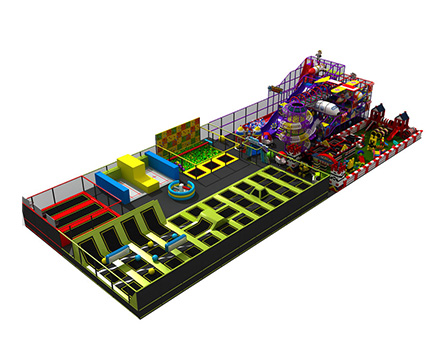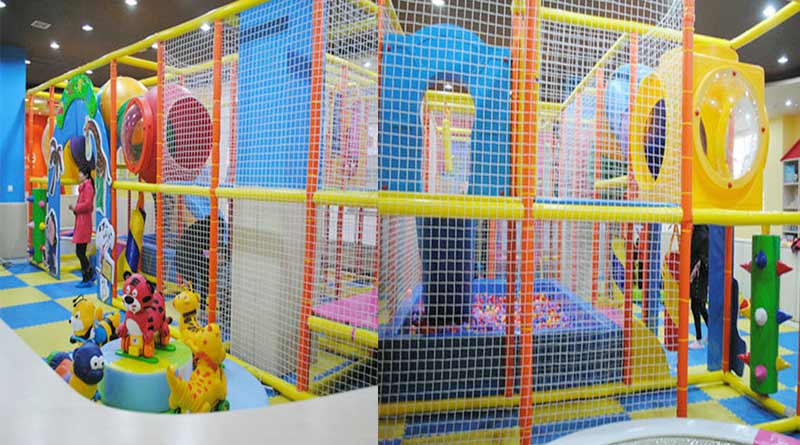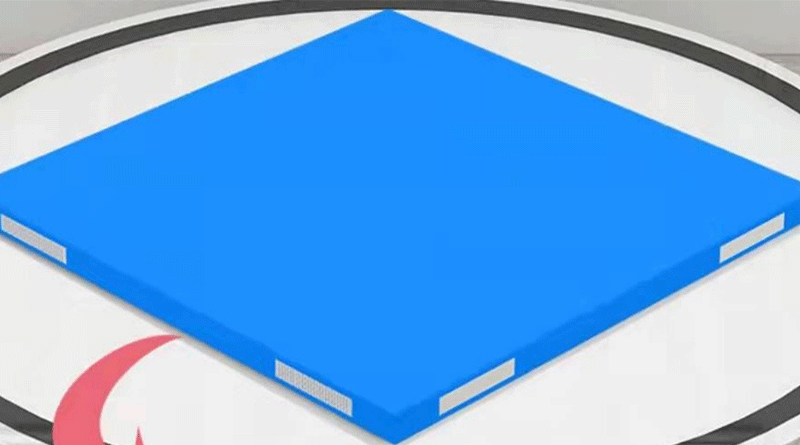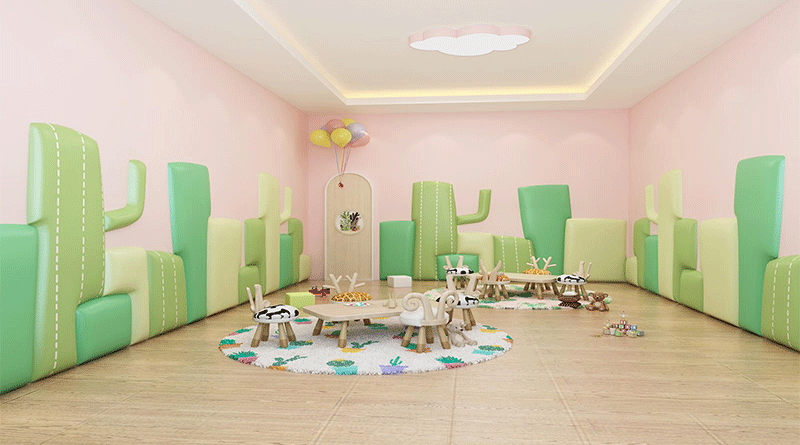How to Open a Trampoline Park: Costs, Equipment, and Business Plans
 May 23,2025
May 23,20251. Why Open a Trampoline Park?
In recent years, the trampoline park industry has emerged as a dynamic and profitable segment within the family entertainment sector. Driven by changing consumer preferences for active, social, and immersive experiences, trampoline parks have evolved from niche attractions to mainstream destinations. The global trampoline park market, valued at approximately $1.5 billion in 2023, is projected to grow at a compound annual growth rate (CAGR) of 8.5% from 2024 to 2030, according to industry reports. This growth is fueled by several key factors:
- Rising Demand for Active Entertainment: In an era of increasing screen time and sedentary lifestyles, parents and individuals are seeking out physical activities that combine fun with fitness. Trampoline parks offer a unique blend of exercise and entertainment, appealing to both children and adults.
- Family-Friendly Appeal: Trampoline parks cater to multi-generational families, providing a safe and engaging environment where parents can interact with their children. This makes them ideal destinations for weekends, holidays, and school vacations.
- Event and Party Culture: The popularity of hosting birthday parties, corporate events, and team-building activities at trampoline parks has surged. These events often generate higher revenue per customer due to package pricing that includes food, private areas, and dedicated staff.
2. Revenue and Profitability Insights
Successful trampoline parks can achieve healthy profit margins by leveraging diverse revenue streams and efficient cost management. The average annual revenue for a medium-sized trampoline park (10,000-15,000 square feet) ranges between 500,000 and 1 million, with net profit margins typically falling between 15% and 25%. Key drivers of profitability include:
- High Customer Retention: Repeat customers, especially through membership programs or loyalty cards, contribute significantly to steady revenue. Families and local school groups often become regular visitors.
- Upsell Opportunities: Additional income streams such as food and beverage sales, merchandise, arcade games, and premium attractions (e.g., ninja courses, foam pits) can boost average spending per customer by 20-30%.
- Off-Peak Utilization: Maximizing revenue during weekdays and non-peak hours through discounted rates for school groups, senior citizens, or adult-only sessions helps improve capacity utilization.
3. A Wide Range of Customers
Trampoline parks attract a remarkably diverse customer base, spanning multiple age groups and demographics:
- Children (5-12 years): The core audience, often accompanied by parents, who visit for recreational play and birthday parties.
- Teens and Young Adults (13-25 years): Drawn to the social and competitive aspects of trampolining, such as dodgeball courts and freestyle jumping.
- Adults (25+ years): Increasingly using trampoline parks for fitness classes, stress relief, and family outings.
- Corporate and Group Clients: Companies booking team-building events, and schools or summer camps organizing field trips.
This diversity reduces reliance on a single customer segment, making the business resilient to market fluctuations.
4. How Much Does It Cost to Open a Trampoline Park?
Launching a trampoline park demands thorough planning and a substantial financial outlay. The upfront costs typically fall between $500,000 and $3 million, while continuous expenditures cover items like insurance, utility bills, and staffing fees. When aiming to secure financing, creating a detailed business plan is indispensable. Vital elements encompass picking an ideal location, crafting the park's design, getting the necessary permits and licenses, and setting up a seamless booking mechanism.
A. Initial Investment Costs
The total cost to open a trampoline park varies significantly based on location, size, and amenities. Below is a breakdown of typical expenses for a 10,000-square-foot park in the United States:
Location and Space
- Rent/Lease: Monthly rent for a commercial space in a suburban area ranges from 5,000 to 10,000, depending on the region. A security deposit and first/last month's rent may add 15,000-30,000 upfront.
- Purchase (Optional): Buying a property can cost 500,000-1 million, but most startups opt for leasing to reduce initial capital outlay.
Build-Out and Renovations
- Construction Costs: Converting an empty space into a trampoline park involves flooring modifications, safety padding, and structural reinforcements. This typically costs 50-80 per square foot, totaling 500,000-800,000 for 10,000 square feet.
- Permits and Licenses: Building permits, safety certifications, and business licenses can cost \(10,000-\)20,000, depending on local regulations.
Trampoline Park Equipment
- Trampoline Systems: Commercial-grade trampolines, including wall-to-wall jump areas, dodgeball courts, and performance trampolines, cost 150,000-300,000.
- Safety Equipment: Padding, netting, foam pits, and emergency safety gear add 50,000-100,000.
- Additional Attractions: Ninja courses, rock climbing walls, or arcade games can increase equipment costs by 50,000-150,000.
Initial Marketing and Branding
- Marketing Campaigns: Digital marketing, social media ads, and local promotions cost 20,000-50,000 for the launch phase.
- Branding and Design: Logo design, website development, and interior branding may add 10,000-30,000.
Insurance and Legal Fees
- Insurance: Liability insurance, property insurance, and worker's compensation cost 15,000-30,000 annually, with an upfront premium of 5,000-10,000.
- Legal Fees: Contract drafting, lease negotiations, and compliance checks amount to 5,000-15,000.
B. Operational Costs (Monthly)
- Rent: 5,000-10,000 (as above).
- Staffing: A team of 10-15 employees (attendants, lifeguards, front desk, cleaners) costs 30,000-50,000 per month.
- Utilities: Electricity, water, and HVAC for a large space can reach 8,000-15,000 monthly.
- Maintenance and Repairs: Regular equipment checks and minor fixes cost 5,000-10,000 per month.
- Marketing: Ongoing digital ads and community engagement cost 5,000-10,000 monthly.
C. Total Initial Investment
For a mid-sized trampoline park, the initial investment typically ranges from 700,000 to 1.5 million, with smaller parks (5,000-8,000 square feet) costing 400,000-800,000 and large-scale parks (20,000+ square feet) exceeding $2 million.
5. Trampoline Park Business Plans: Key Components
A. Market Research and Industry Analysis
- Competitor Analysis: Identify local trampoline parks, assess their strengths/weaknesses, and determine your unique selling proposition (USP), such as specialized fitness classes or exclusive party packages.
- Target Market Segmentation: Define your primary and secondary customer groups, and tailor your offerings to their needs (e.g., toddler-friendly sessions for parents of young children).
B. Revenue Model and Pricing Strategy
- Base Revenue Streams:
- Admission Fees: 15-30 per hour, with discounted rates for longer sessions (e.g., $25 for 2 hours).
- Party Packages: Premium packages priced at 200-500, including private rooms, food, and dedicated staff.
- Pricing Strategy: Implement dynamic pricing for peak (weekends) and off-peak (weekdays) hours, and offer loyalty discounts or annual passes for frequent visitors.
C. Operational Plan
- Staffing and Training: Hire friendly, energetic staff and provide comprehensive training in safety protocols, customer service, and emergency procedures. Certifications in CPR and first aid are essential for lifeguards and supervisors.
- Safety and Maintenance: Establish daily equipment checks, regular safety audits, and a cleaningschedule to maintain a safe and inviting environment. Partner with professional maintenance services for annual inspections.
- Technology Integration: Use point-of-sale (POS) systems for seamless transactions, online booking platforms to manage reservations, and customer relationship management (CRM) tools to track loyalty programs.
D. Financial Projections and Funding Needs
- Revenue Projections: Based on an average of 100 daily visitors at 20 per visit, annual revenue can reach 730,000. Including party bookings and upsells, this can exceed $1 million.
- Funding Sources: Secure funding through a combination of personal savings, small business loans , and partnerships with investors. Prepare a detailed business plan to attract lenders or partners.
6. Trampoline Park Equipment: Choosing the Right Suppliers
Investing in high-quality, commercial-grade equipment is critical for safety and longevity. Reputable suppliers like Sky Zone, Rockin' Jump, and Trampoline Park Equipment Manufacturers in China offer customizable packages that include:
- Trampoline Mats and Frames: Designed to withstand heavy use, with anti-slip surfaces and reinforced springs or bungee systems.
- Safety Enclosures: Netting and padding that meet international safety standards (e.g., ASTM F381 for trampoline safety).
- Additional Attractions: Customizable features like basketball hoops, slacklines, or interactive projection games to enhance the customer experience.
7. Staffing and Training: Building a Strong Team
A well-trained team is essential for delivering exceptional customer service and ensuring safety. Key roles include:
- Front Desk Staff: Handle bookings, payments, and customer inquiries, requiring strong communication skills.
- Court Attendants: Monitor jump areas, enforce safety rules, and assist customers, needing thorough training in safety protocols.
- Party Hosts: Manage birthday parties and events, requiring organizational skills and a friendly demeanor.
- Managers: Oversee daily operations, staff scheduling, and inventory management, ideally with experience in the entertainment industry.
Training programs should include:
- Safety Certification Courses: Partner with organizations like the International Trampoline Park Association (ITPA) for standardized safety training.
- Customer Service Workshops: Focus on conflict resolution, teamwork, and creating a welcoming atmosphere.
- Emergency Preparedness Drills: Regular simulations for accidents, fires, or medical emergencies to ensure quick, effective responses.

8. Conclusion
Opening a trampoline park offers a compelling opportunity in a growing industry with diverse revenue streams and a broad customer base. While the initial investment can be substantial (700,000−1.5 million for a mid-sized park), careful planning, strategic pricing, and a focus on safety and customer experience can drive profitability and long-term success. By conducting thorough market research, developing a robust business plan, and investing in quality equipment and staff, entrepreneurs can bounce into a rewarding venture that combines fun with financial viability.
Whether you're targeting families, fitness enthusiasts, or corporate clients, the key to success lies in creating a unique, safe, and engaging environment that keeps customers coming back. With the right preparation and execution, a trampoline park can become a thriving hub of active entertainment in your community.







